As the political heart of the United Kingdom, Westminster has long been London’s tourism focal point. Stately buildings, religious headquarters, historic landmarks and a host of fine pubs and restaurants are all bordered by the River Thames. But there’s also much more than meets the eye.
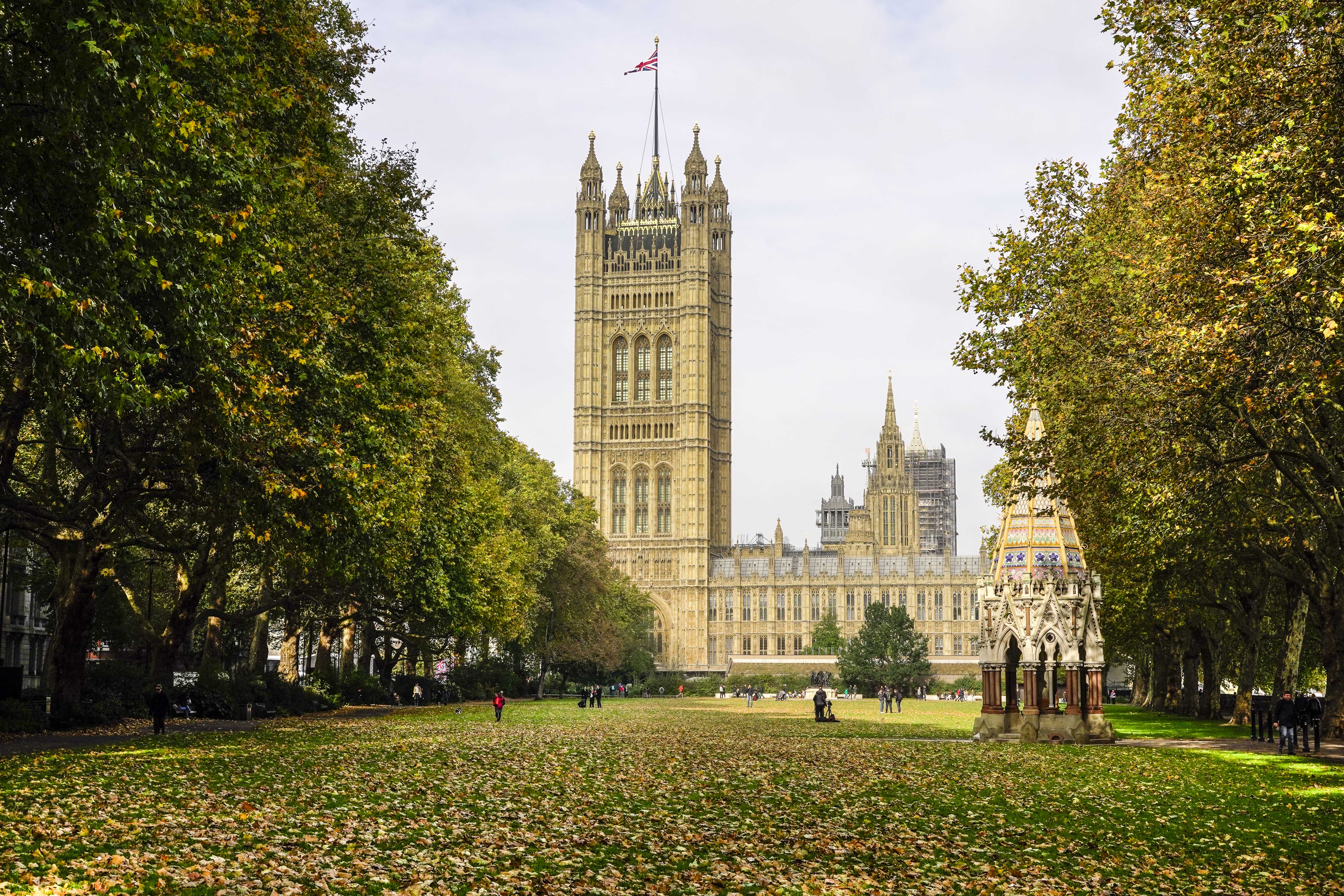
The Houses of Parliament and Victoria Tower Gardens (Photo: Paul Stafford for TravelMag)
It’s probably the best-known region of the United Kingdom. Westminster makes the news on a daily basis, with intrigues, victories, disappointments and scandals the likes of which any soap opera showrunner would be proud. And that is because Britain’s laws, its future, its governance are all hotly debated in the Palace of Westminster. National mourning and celebration all tend to use Westminster Abbey as a focal point. The prime minister lives here. The Queen lives across the road in Buckingham Palace. And centuries of history are wrapped up and presented at every turn, making it one of the best areas of London to explore on foot.
There are actually two Westminsters: the government district that hugs the River Thames between the bridges of Hungerford and Vauxhall, and the City of Westminster, a borough of London which covers a much larger area, encompassing the former Westminster and reaching as far north as Regent’s Park. This guide will cover the first of these, a fine wedge of Central London, sandwiched between the River Thames, and Vauxhall Bridge Road and The Mall, which converge at a point near Victoria train station.
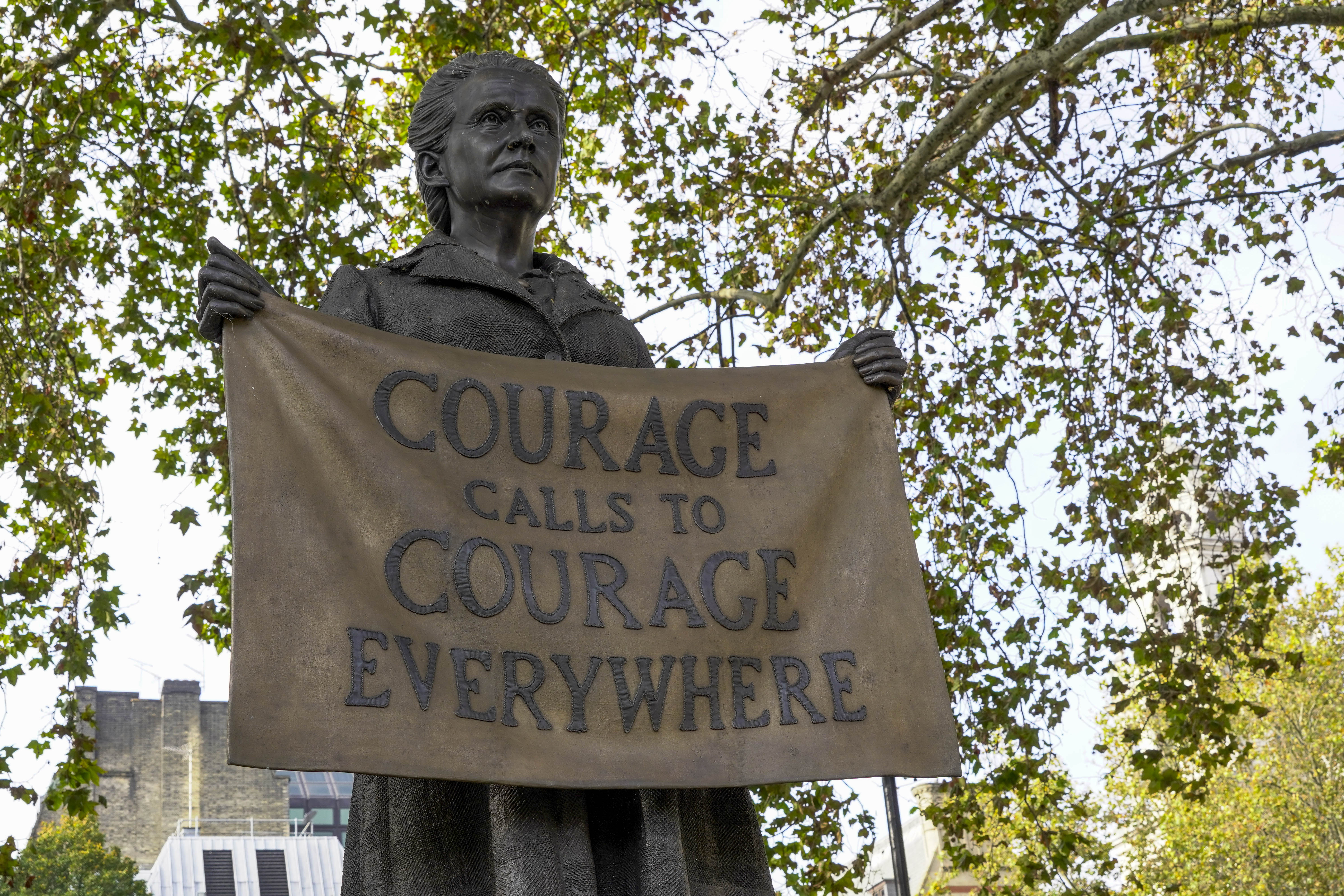
Millicent Garrett Fawcett statue in Parliament Square (Photo: Paul Stafford for TravelMag)
A Seat for Government
The Houses of Parliament are officially known as the Palace of Westminster. There has been some sort of royally-appointed building here beside the river since the early 11th century, although fires and extensions have seen the site change regularly. At one time, the reigning monarch lived here, then in the early 1500s, Parliament moved in full-time, having met there regularly for the preceding two centuries. Today’s iteration is a neo-gothic beauty built during the Victoria era. And it’s a building known the world-over thanks in part to its Elizabeth Tower, which holds the Big Ben clock. At the time of writing, Big Ben was in the midst of a careful restoration, but it should be visible and audible once more in 2021.
This is the best place to start an exploration of Westminster, and the revered sights come thick and fast. You are likely to see some form of protest in Parliament Square Garden and, depending on the cause, one of the many statues or preeminent political figures like Winston Churchill or Millicent Garrett Fawcett will act as the gathering point. The Churchill War Rooms (Clive Steps), used as a secret office during World War II, and the Supreme Court (Little George St), with its fine relief carvings, are some of the more notable buildings nearby.
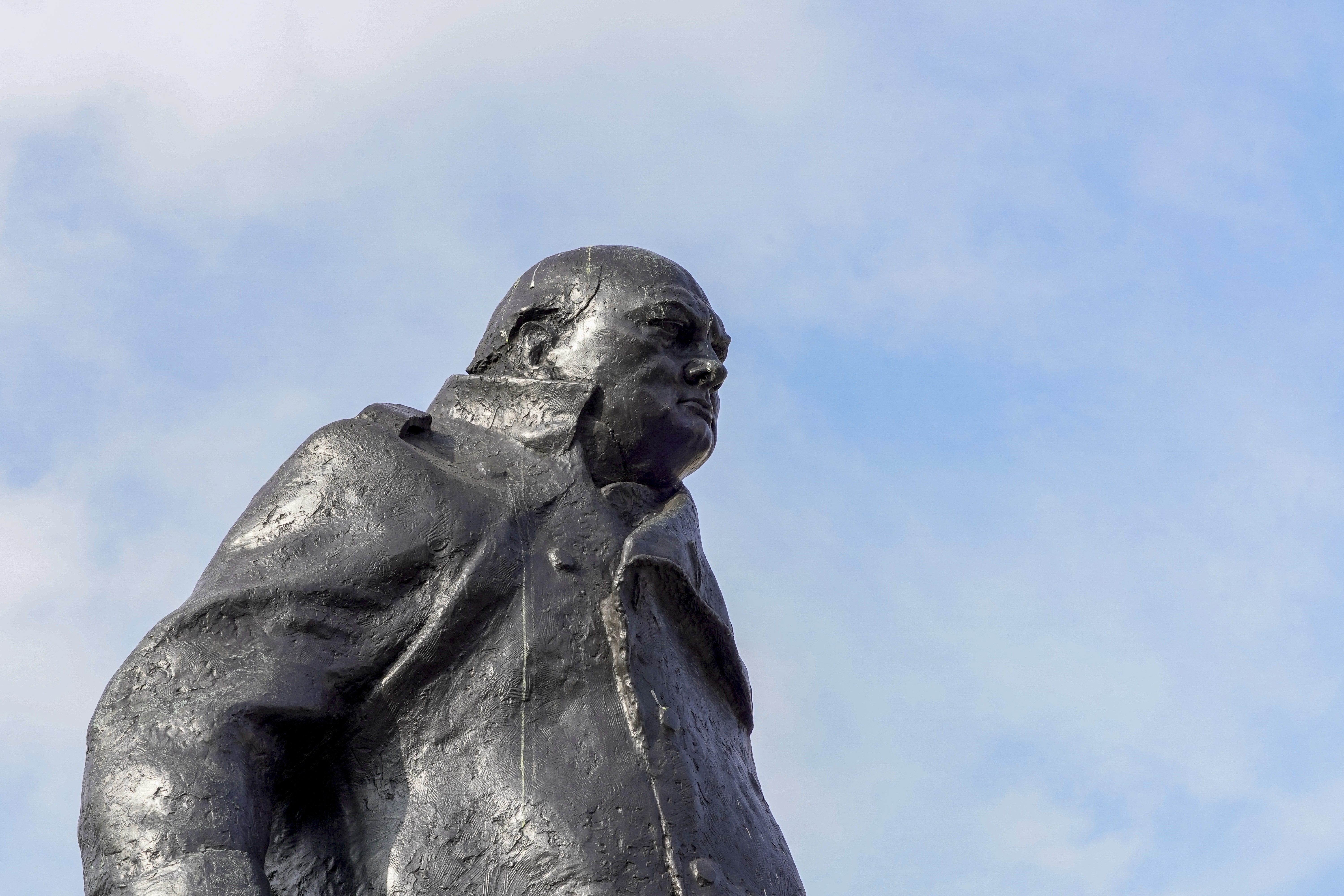
Winston Churchill statue in Parliament Square (Photo: Paul Stafford for TravelMag)
Religious Tumult
But the highlight is Westminster Abbey (20 Deans Yard), which predates all of the other buildings around it. Beneath its grounds and within its walls are contained key chapters of English, British and often world history. Rudyard Kipling, Charles Darwin, Sir Isaac Newton, Stephen Hawking, Charles Dickens and Laurence Olivier are among the many notable individuals buried here alongside most of the former monarchs of England and Britain. All but two monarchs in the country since 1066 have been crowned here, and many high-profile weddings and funerals also take place here.
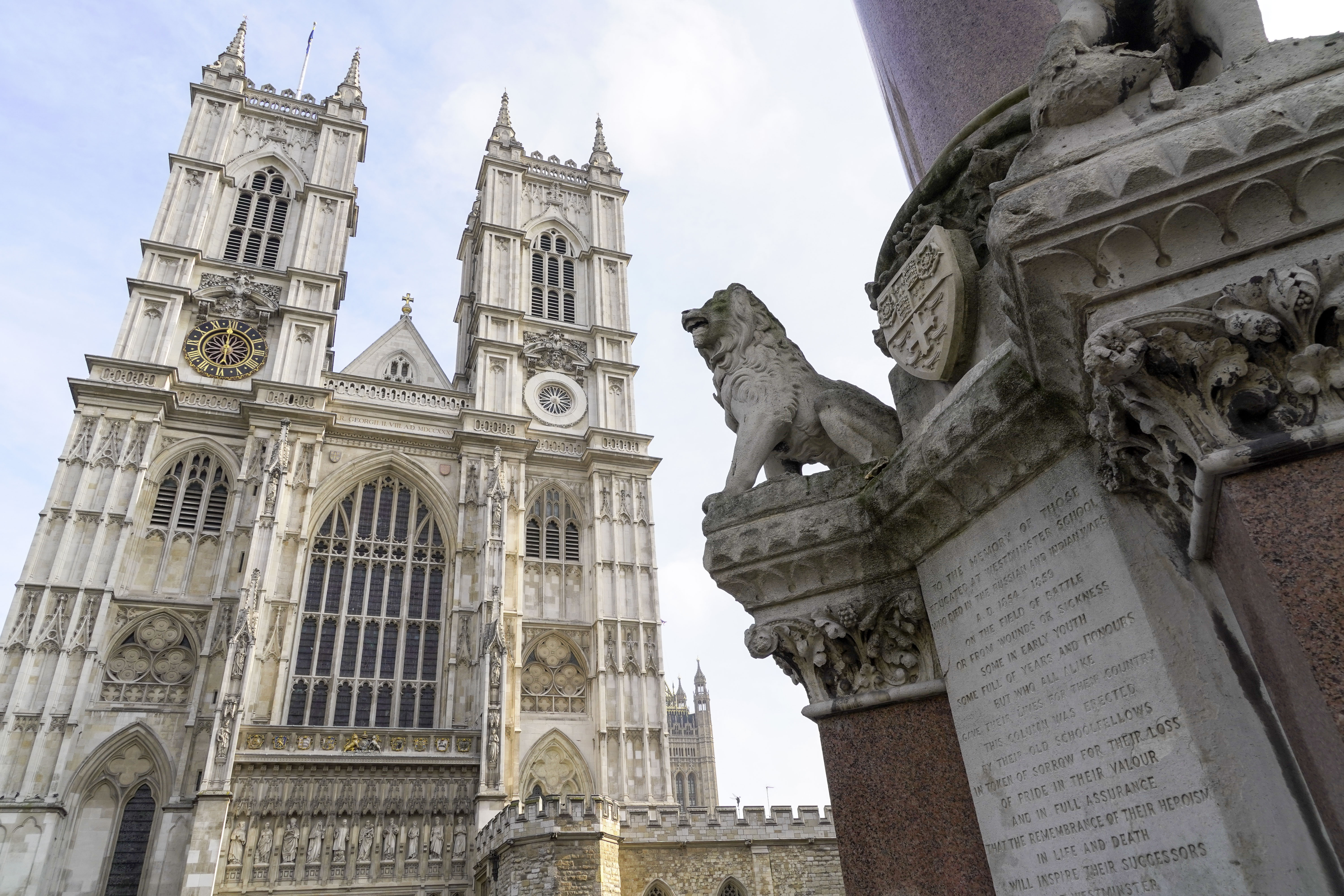
Westminster Abbey’s Great West Door with the Crimea and Indian Mutiny memorial (Photo: Paul Stafford for TravelMag)
Westminster Abbey was first recorded in the year 960. Parts of the current building were started in 1042 and it served mainly as a monastery until the Reformation, where it briefly became a cathedral, until Elizabeth I decided it’d better serve as a Royal Peculiar (i.e. a religious building under the command of the monarch rather than the diocese). After all, the Tudors didn’t exactly take kindly to the idea of God being above them.
One point of confusion with all of this, is that there is actually a Westminster Cathedral (42 Francis St), although rather than Church of England, it is Catholic. It is located ten minute’s-walk west near Victoria, where the striking neo-Byzantine, red-and-white-brick building seems like a modern defiance on the part of the Roman Catholic church. This is a much newer building, started in 1895 and still unfinished on the inside.
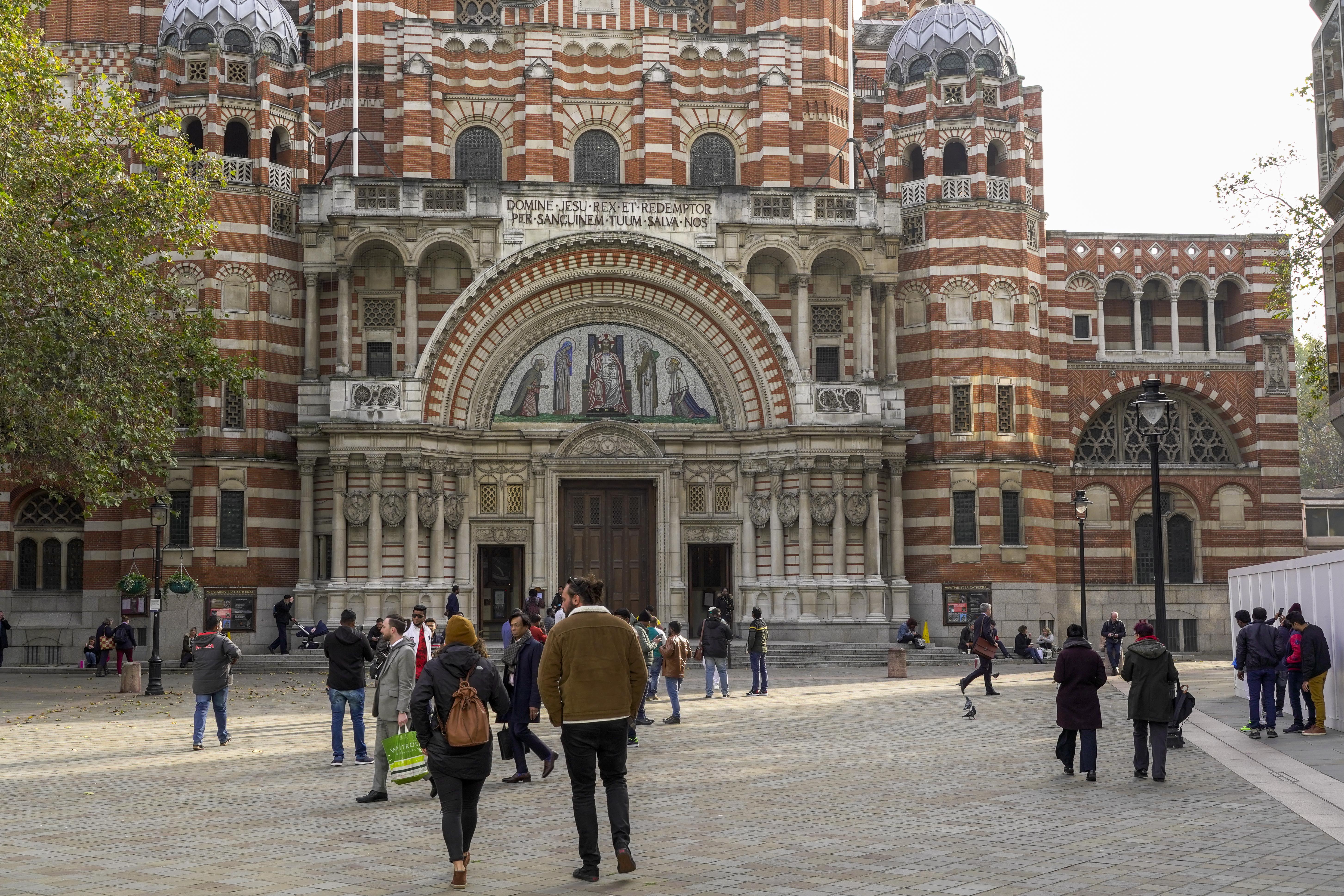
Neo-Byzantine architecture of Westminster Cathedral (Photo: Paul Stafford for TravelMag)
Art Corner
Victoria comes as quite a change of pace to the stately Westminster that exists closer to the river. Sleek glass towers and modern shopping centres are interspersed with the occasional protected landmark, such as Victoria Palace Theatre (79 Victoria St). At the time of writing, Hamilton has been filling every seat in this theatre for a couple of years already. The Apollo Victoria (17 Wilton Rd) is another top theatre close-by.
From there, following Vauxhall Bridge Road back towards the Thames, the Chelsea College of Arts and the Tate Britain (Millbank) lend the southern corner of Westminster a sense of past British art alongside that of the future. Tate Britain has an excellent ‘Walk Through British Art’ exhibition that charts the country’s creative development from 1545 to the present. The works of William Blake, John Constable, Anna Lea Merritt, Sir John Everett Millais, and an excellent collection of J.M.W. Turner paintings are on show.
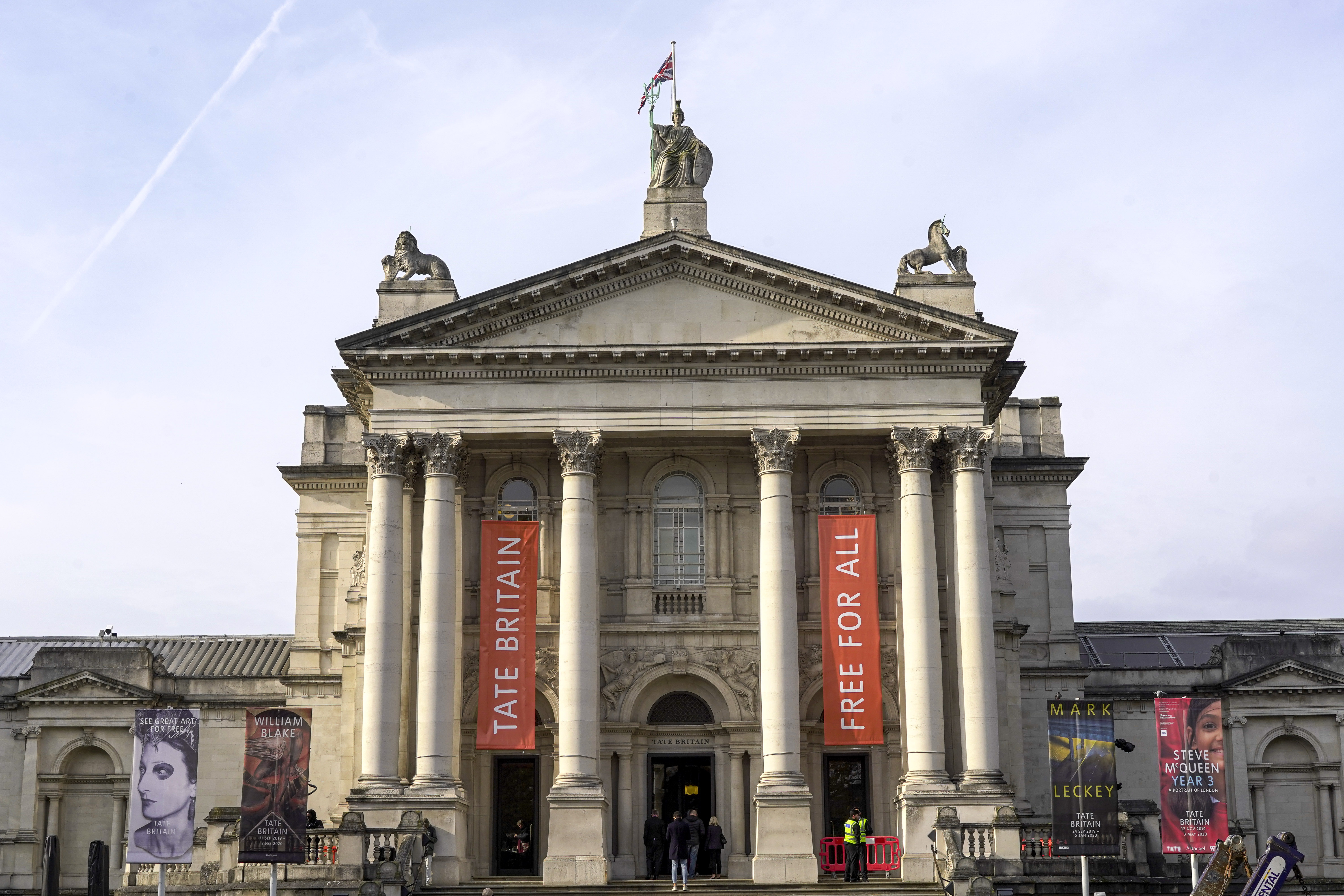
Main entrance to the Tate Britain gallery (Photo: Paul Stafford for TravelMag)
Heading north along Millbank, there is a path beside the Thames leading to Victoria Tower Gardens, a large expanse of grass and trees that offer great views of the Victoria Tower, which is part of the Palace of Westminster, and are often much quieter than the rest of area. St James’s Park to the north is another popular place to stroll and have a picnic.
Getting around
Being so central, and so important to British governance, Westminster is well-served by buses and the London Underground, for which there are four stations in the vicinity: Westminster, St James’s Park, Victoria, and Pimlico. Trains from Victoria station serve Southeast England, while Victoria Coach Station sees coaches depart for all destinations in the UK, as well as many in Europe as well. Various London buses connect the area to the rest of the city. Distances are easily covered on foot, as this is a compact district.
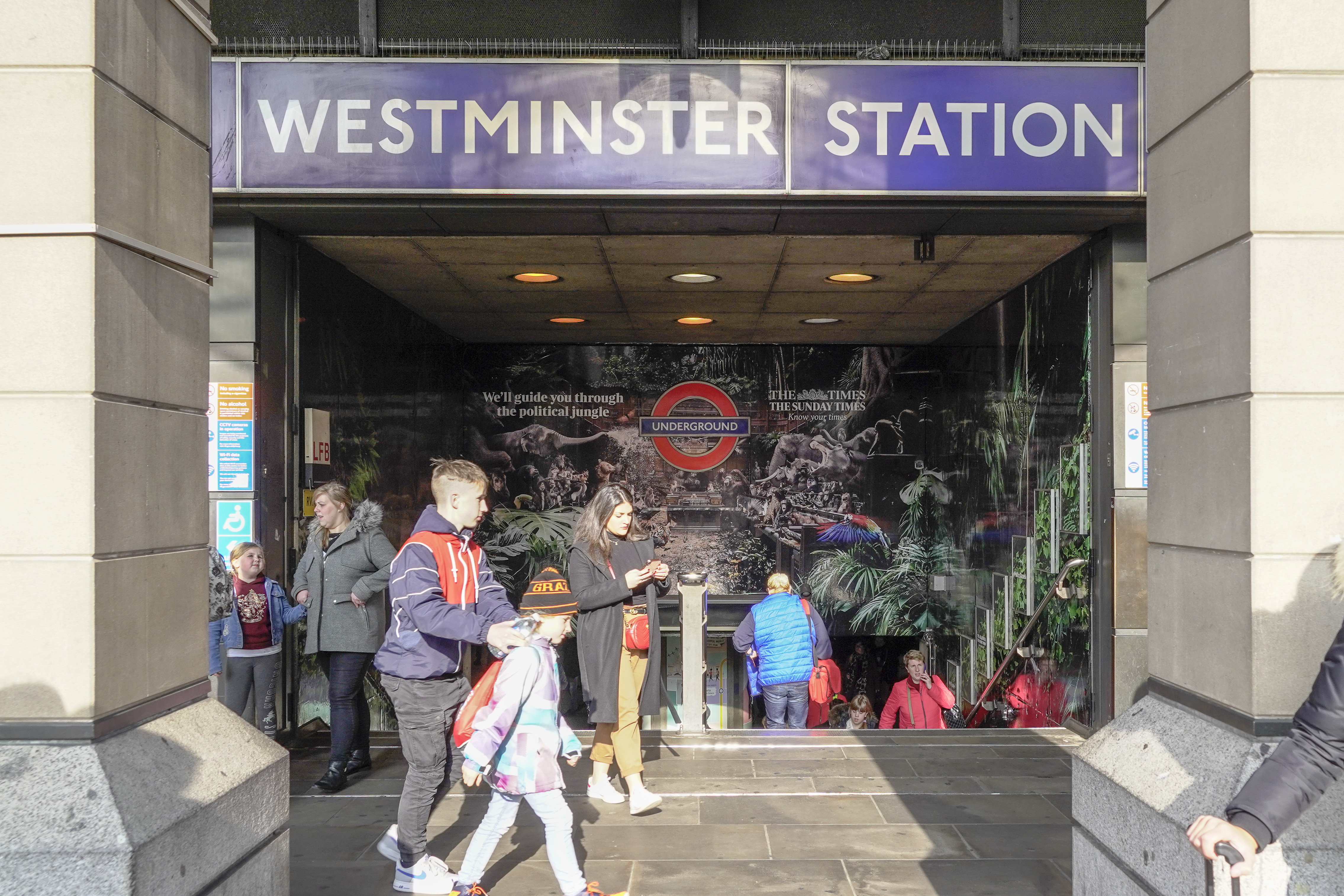
Westminster London Underground station (Photo: Paul Stafford for TravelMag)
Hotels
As with most of the hotels in Westminster, the central location and high standing of the area mean that a bargain-price bed is a rarity. Instead, most establishments attempt to outdo one another with quality of comfort, and at this The Sanctuary House Hotel (33 Tothill St) excels. Rooms feature comfortable beds and work desks, complete with a typically British-looking phone. The hotel sits atop Fuller’s Kitchen pub, where the complimentary breakfast is served. Sanctuary House Hotel is roughly two minutes from Westminster Abbey and St James’s Park.
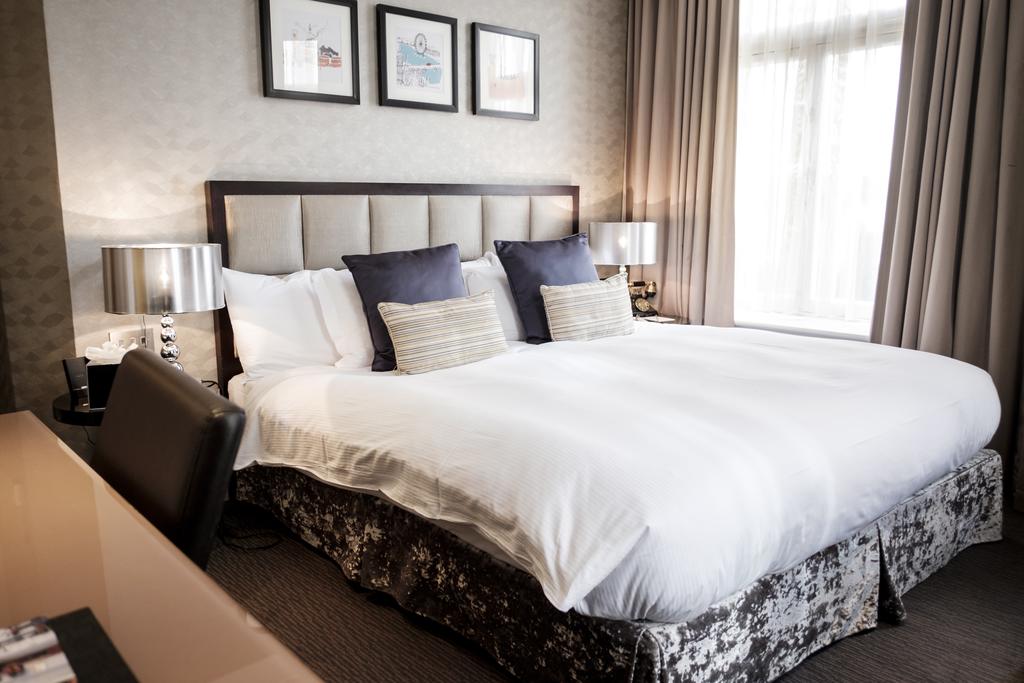
A room at the Sanctuary House Hotel (Photo: Courtesy of The Sanctuary House Hotel)
Wellington Hotel by Blue Orchid (71 Vincent Sq) is situated in a peaceful crevice of Westminster, and occupies an impressive old building with tall chimneys and access to private gardens. The rooms are among the most spacious in the area, furnished in earthy tones that are augmented by pops of colour using flowers and warm lighting. Wellington Hotel also offers better amenities than much of the competition, with its own bar, restaurant and fitness centre.
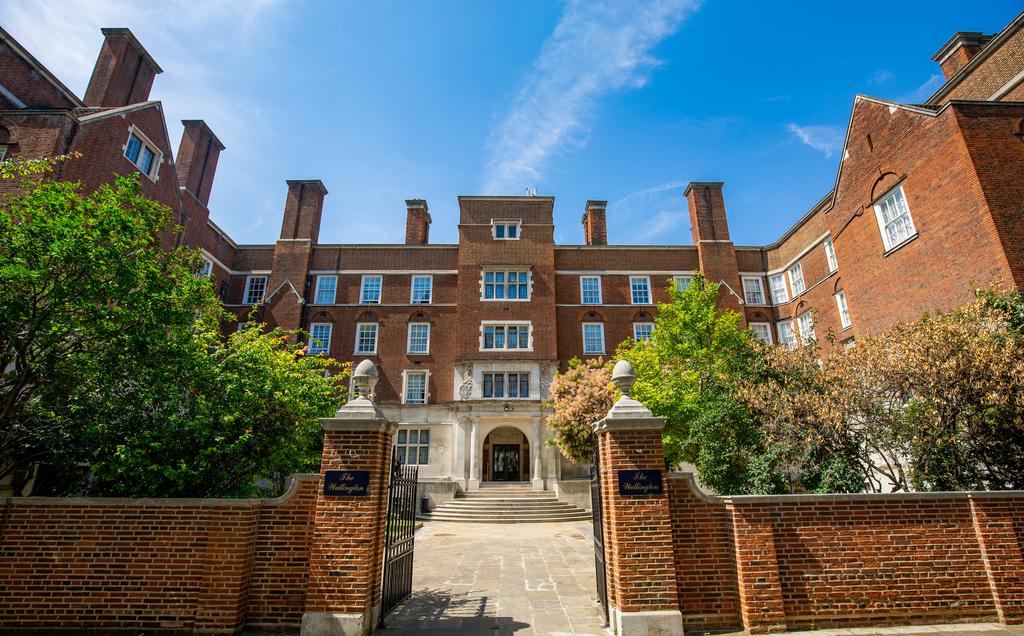
Wellington Hotel (Photo: Courtesy of Blue Orchid Hotels)
The best budget option in Westminster is hub by Premier Inn (21 Tothill St), which offers compact rooms, and we mean compact. The standard room has under-bed storage so that you can stow your bags out of the way. The plus side is that the rooms have not been designed in a hurry. You can control your room’s lighting and temperature via a touchscreen at the head of the bed, and there’s still enough space for a 40-inch Smart TV and an en-suite shower room. This is also the best located hotel on this list, as well as the best value.
Pubs
Exhibiting the nefarious side of the British government’s wranglings with law and order, The Morpeth Arms (58 Millbank) was once used as holding cells for prisoners who were about to be shipped off to Australia, never to return. The pub itself looks across the Thames at the MI6 building and is a great stop after wandering around the Tate Britain. Various cask ales are served on tap, as well as craft beers, spirits and wines. They also do a decent pub meal, with thoughtful options for vegetarians.
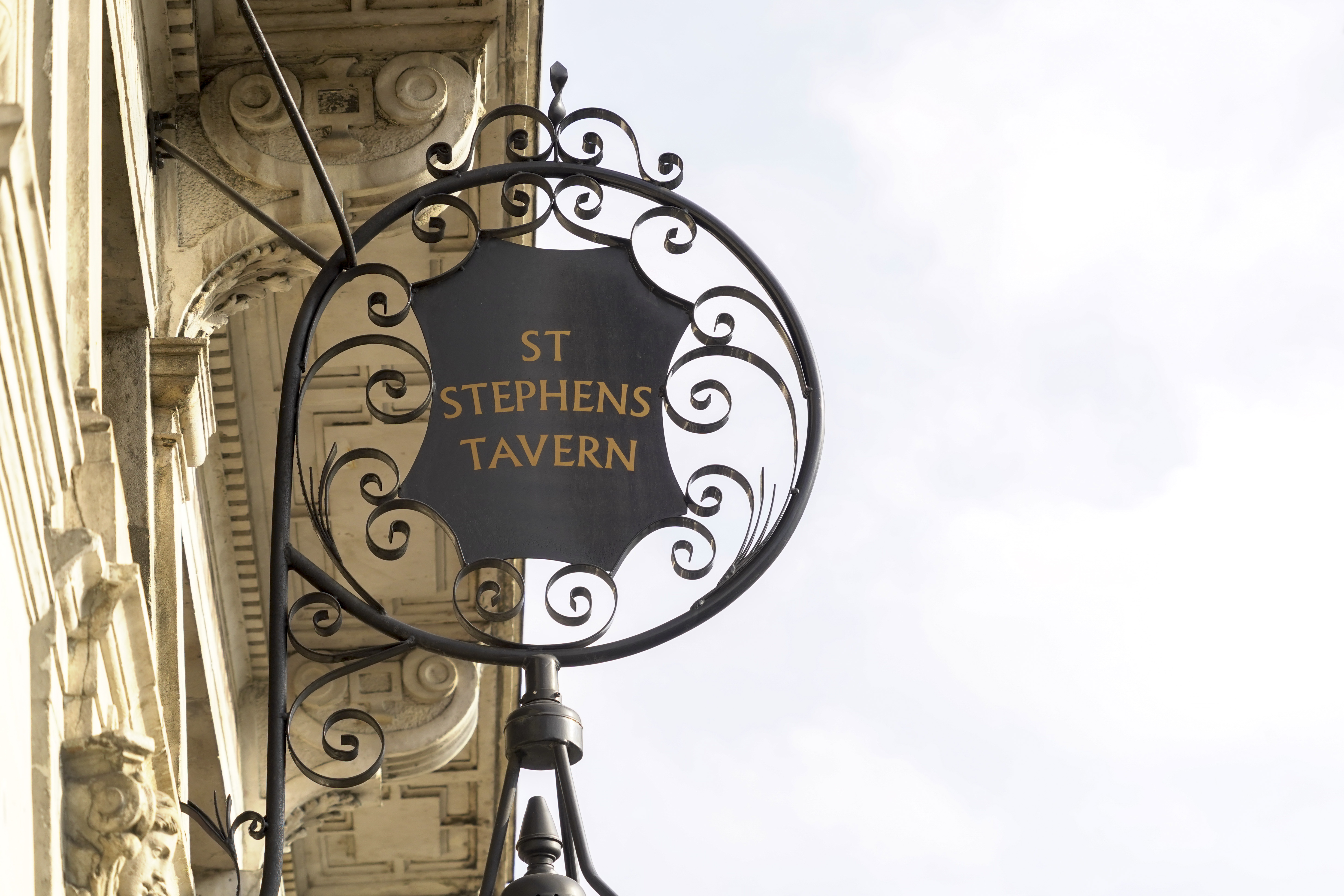
St Stephen’s Tavern (Photo: Paul Stafford for TravelMag)
St Stephen’s Tavern (10 Bridge St) is a cheery, traditional pub that commands a fine view of the Palace of Westminster. In fact it’s so close that, since opening in 1875, this classic London pub has been frequented by many a suit-wearing politician including, it is claimed, Winston Churchill. There are four cask ales available as well as draught lager, bottled cider and spirits, as well as coffee and tea for when it seems a little early to be getting on the grog. The kitchen serves up classic pub grub (think burgers, fish and chips, steak and ale pie etc.).
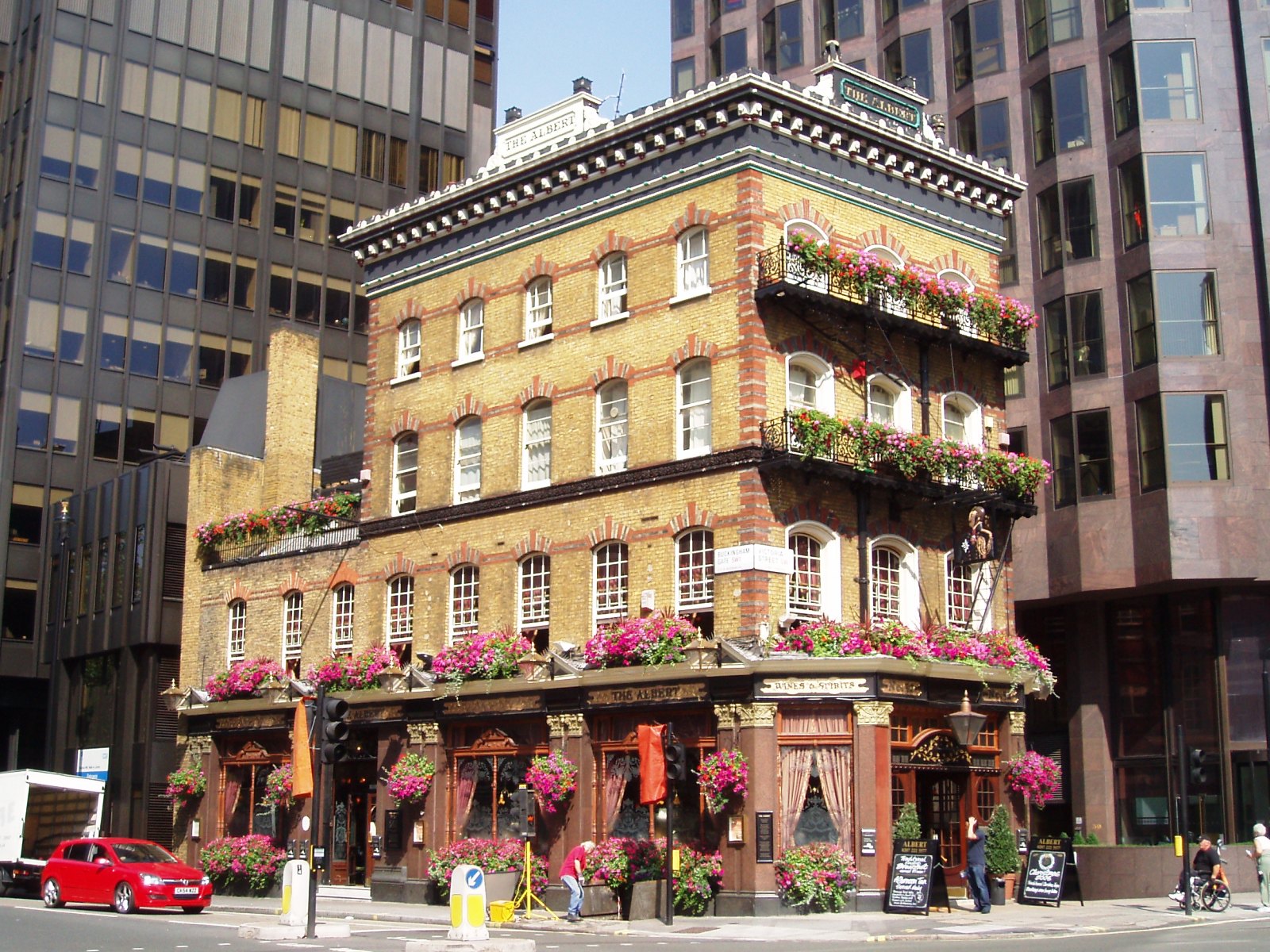
The Albert Pub in Westminster (Photo: Ewan Munro via Flickr / CC BY-SA 2.0)
Surrounding the Albert Pub (5 Howick Place) are high-rise office blocks, practically dwarfing this four-storey building. But rather than rendering it anonymous, this 1862-built pub only stands out more, with its old-fashioned Victorian facade and pretty flower boxes. In fact the building, which survived the Blitz in World War II, is so celebrated that it has been given a Grade II listed status, ensuring it will be protected for years to come. The pub is operated by Greene King, so their range of ales like Old Speckled Hen can be found at the pump among a good range of others.
The Speaker Victoria (46 Great Peter St) can be found right in the heart of Westminster government district and is named for the parliamentary position of Speaker of the House. Given the unenviable task of keeping the House of Commons in order, as the highest authority there, the Speaker’s job is often akin to tightrope walking, undertaken with vim and a non-partisan outlook. As such the Speaker pub follows suit in terms of upholding a sense of decency and propriety, in this case banning music, TVs and fruit machines, serving a solid range of cask ales and with a lively atmosphere driven by human interactions.
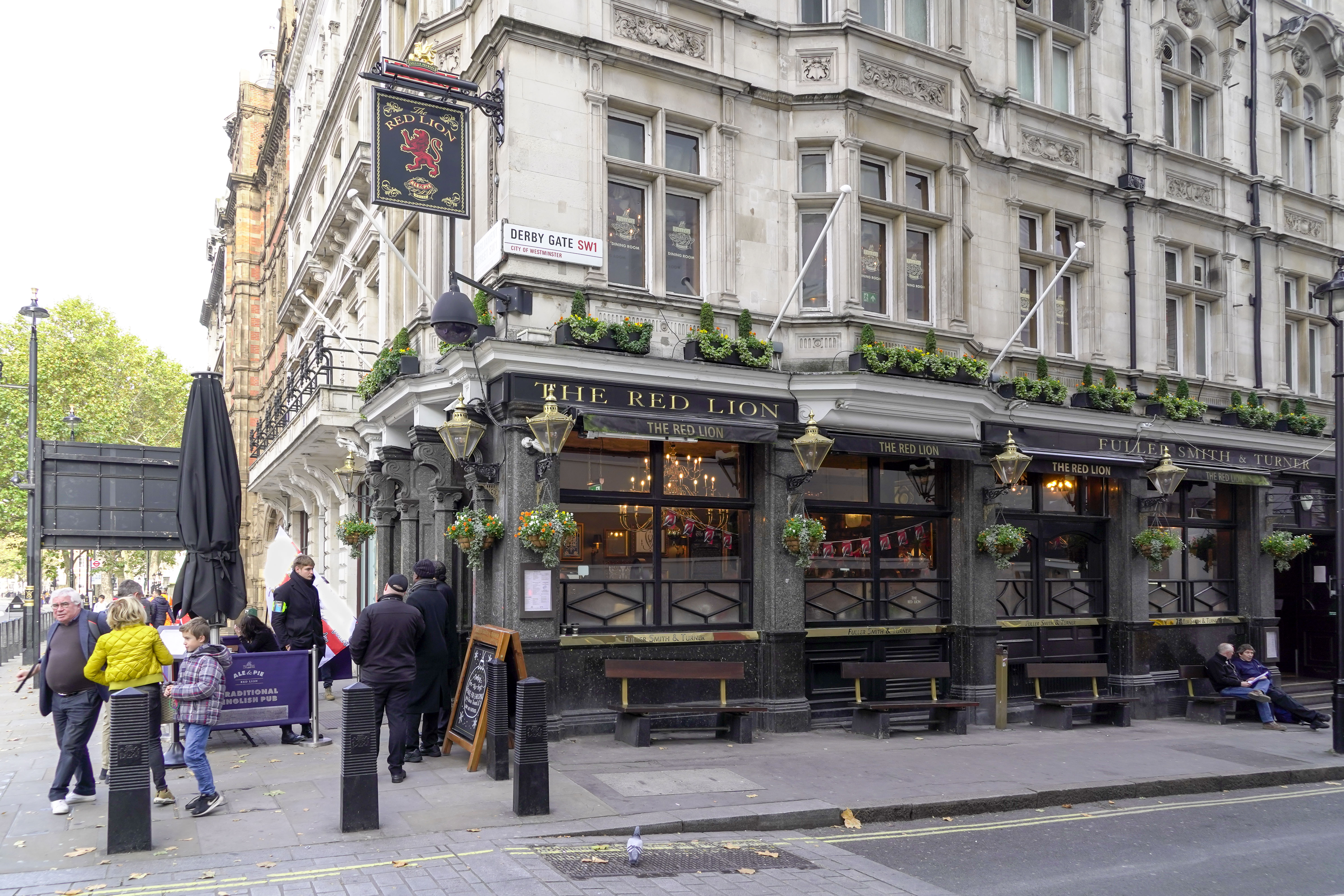
The Red Lion Pub (Photo: Paul Stafford for TravelMag)
Portraits and caricatures of Britain’s former leaders like Winston Churchill and Margaret Thatcher line the walls of The Red Lion (48 Parliament St). This lovely pub’s plush, leather-backed seating, low-key lighting and wood-panelled interiors give it a cosy atmosphere. The main bar area is especially impressive with chandeliers and carved wood pillars. There’s a limited amount of seating outside, and comfort food fills the menu, with a special section dedicated to pies. A couple of veggie options are also on offer, and there’s even a pie tasting board if one type of pie just won’t suffice.
Fine Dining Restaurants
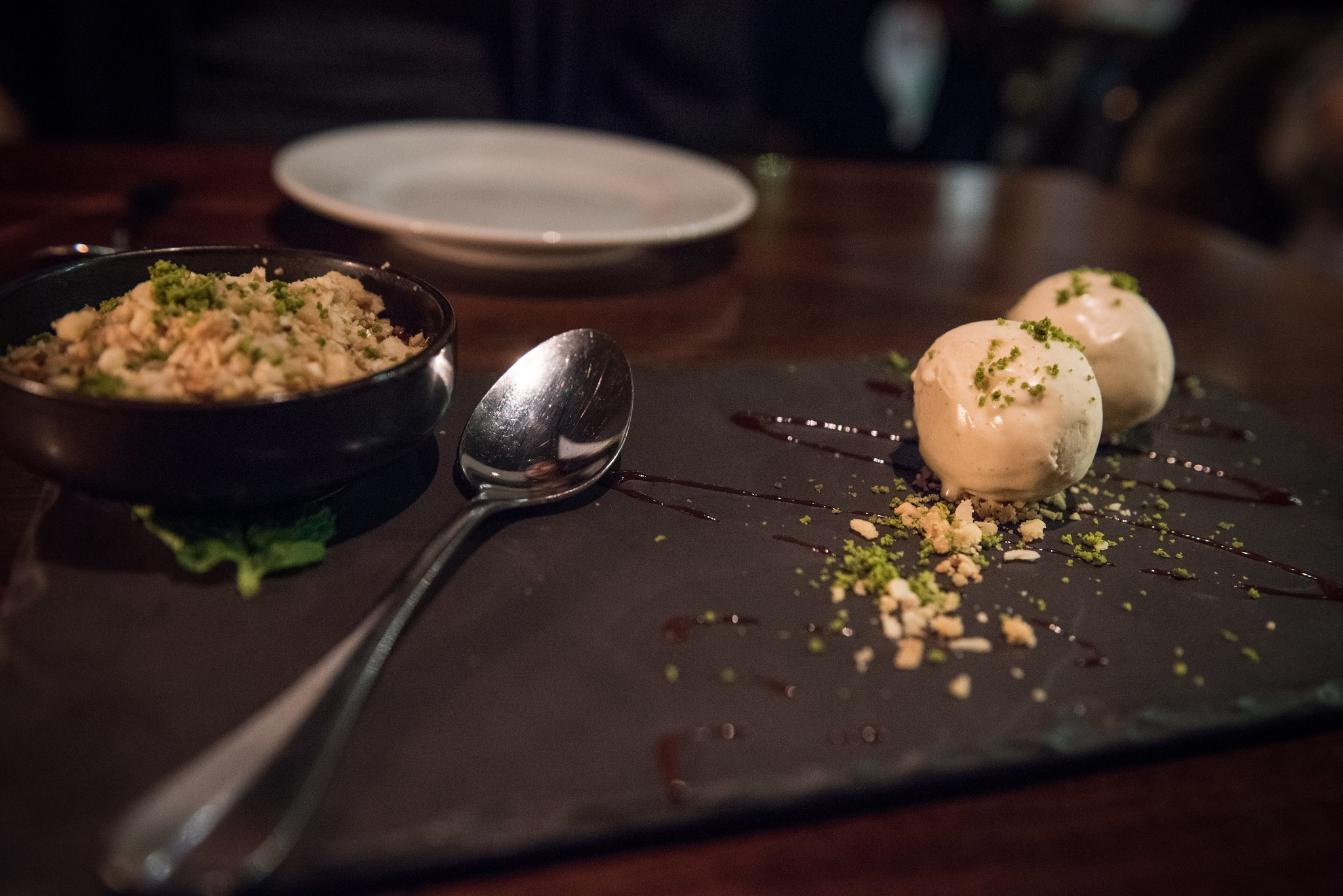
Dessert at the Cinnamon Club (Photo: Merlijn Hoek via Flickr / CC BY-NC-ND 2.0)
At the time of writing, there at 67 Michelin starred restaurants in London, but none fall within the Westminster government district. Roux at Parliament Square (11 Great George St) however, is the work of Michel Roux Jr., who has two Michelin stars to his name at other establishments. Star or not, extravagant cuisine amid luxury, period-style interiors in warm and earthy tones make for a fine combination here. The chef’s tasting menu explores land and sea for fine ingredients, and there’s a private library room for up to ten people for that added dining intimacy.
The contemporary Indian cuisine of The Cinnamon Club (The Old Westminster Library, Great Smith St) comes highly rated. The main dinner menu reads more like a fusion take on pan-Indian cooking, with char-grilled monkfish and Kerala curry sauce, or roast Romney Marsh lamb served with sesame tamarind sauce. ‘Sunday jazz’ and ‘Vegan’ are just a couple of their other excellent menus. Part of the allure of The Cinnamon Club though is the setting, in a former Victorian library, where books still line the walls on two levels.
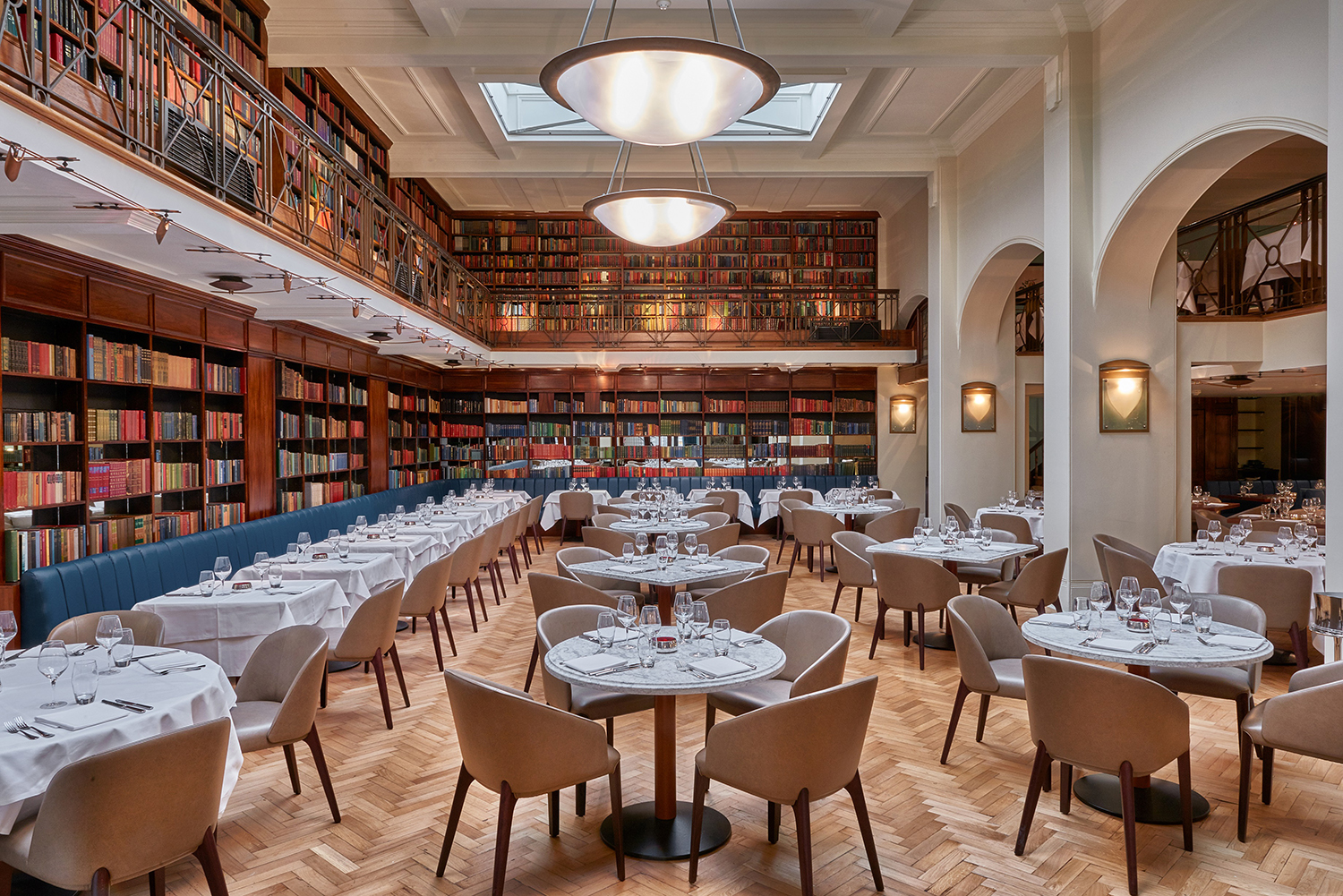
The Cinnamon Club is in a former library (Photo: Courtesy of The Cinnamon Club)
For clarity’s sake, the first naughty piglet resides in Brixton, while The Other Naughty Piglet (The Other Palace, 12 Palace St) is set up to serve seasonal dishes paired with complementary bio-wines amid the bustle of Victoria. This is a particularly good choice if you want fine pre-theatre dining, with both Victoria Palace and Apollo Victoria theatres nearby. Culinary emphasis is placed on charcoal grilled small plates. Wines are primarily sourced from small producers. The pleasant, warm ambience and great service are also big people-pleasers.
If you wish to combine the Tate Britain’s best of British art with the best of British cuisine, then you can do so at The Rex Whistler (Tate Britain Art Gallery) without ever leaving the gallery. Open daily for lunch only, the smart, airy space, with its pristine white tablecloths is surrounded by a vast mural – The Expedition in Pursuit of Rare Meats – by Rex Whistler himself. As you would expect of fine dining in an art gallery, the dishes presented are works of art in their own right, with seasonal exhibits including Loch Duart salmon, grouse confit, and smoked guinea fowl breast making it to the plate.